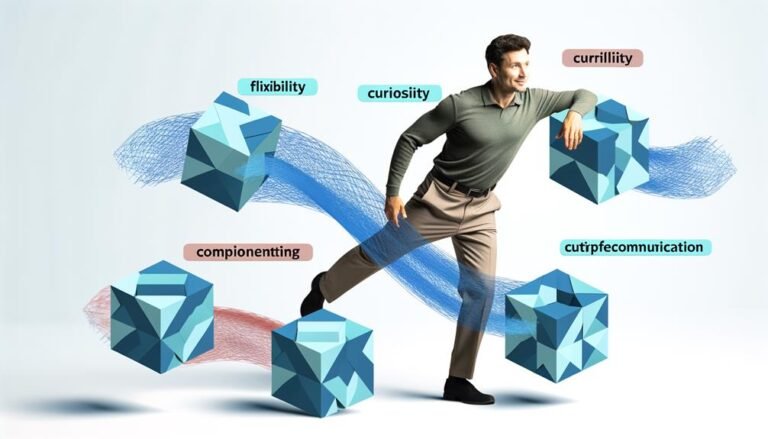Presentation Skills Training: Supercharge Your Professional Growth
Effective Presentation Skills Training
Why Presentation Skills Matter
In today’s professional world, being able to deliver a killer presentation is a game-changer. Whether you’re pitching a new idea, selling a product, or speaking to investors, solid presentation skills can make or break your success. It’s not just about talking; it’s about connecting, persuading, and leaving a lasting impression.
Mastering these skills doesn’t just help you get your point across; it also boosts your confidence and keeps your audience engaged. Better presentation skills can lead to career growth, stronger professional relationships, and more influence in your field.
| Benefit | What It Means |
|---|---|
| Clear Communication | Get your ideas across without the confusion. |
| Confidence Boost | Feel more self-assured when speaking in public. |
| Career Advancement | Open doors to promotions and leadership roles. |
| Engagement | Keep your audience hooked and interested. |
Why Invest in Training
Putting time and money into presentation skills training pays off big time for both individuals and companies. Good training does more than just improve your performance; it makes your whole team work better together. Here are some perks:
- Better Communication: Training hones both your writing and speaking skills, making you a more effective communicator.
- More Confidence: Regular practice and feedback help you feel more at ease, cutting down on public speaking jitters.
- Quick Thinking: Learn to handle questions and challenges on the fly.
- Leadership Skills: Good presenters often make great leaders.
- Time Management and Creativity: Prepping for presentations teaches you to manage your time better and think outside the box.
| Benefit | What It Does |
|---|---|
| Communication Skills | Sharpen your writing and speaking. |
| Confidence | Feel more at ease in front of an audience. |
| Quick Thinking | Improve your problem-solving on the spot. |
| Leadership | Boost your leadership and motivational skills. |
| Time Management | Get better at managing your time and being creative. |
Offering solid presentation skills training can seriously cut down on the stress your team feels about public speaking, leading to better performance and productivity.
Want to level up even more? Check out our courses on communication skills training, management training courses, and executive coaching services.
Techniques for Engaging Presentations
Nailing an engaging presentation is a game-changer for entrepreneurs, startups, and business pros. These skills can make or break how well you get your ideas across. Let’s talk about two killer approaches: theater tricks and communication tools.
Theater Tricks
Theater tricks are gold for teaching folks how to wow an audience. These methods, straight out of the performance playbook, help speakers use every tool in their kit.
- Voice Magic: Mix up your pitch, tone, and volume to keep folks on their toes.
- Body Talk: Use your hands, stance, and face to back up what you’re saying.
- Storytime: Tell gripping stories to make your points stick.
Gary Genard, a whiz in theater-based public speaking, swears by these techniques for business bigwigs. He says that showing up with presence and confidence can seriously boost your power to sway an audience.
Communication Tools
Good communication tools are your secret weapon for making a splash with your presentations. They help you structure your talk, keep the crowd hooked, and get your message across crystal clear.
- Visual Helpers: Use slides, charts, and videos to hammer home your main points.
- Get Interactive: Throw in polls, Q&A sessions, and audience participation to keep things lively.
- Keep It Simple: Make sure your message is clear and straightforward so everyone gets it.
Training in presentation skills can give you a leg up by sharpening your public speaking chops, making your ideas hit harder. Using these tools, you can get better at pitching new business, selling your value, and talking to investors.
For more tips on boosting your business communication, check out our communication skills training and professional development courses.
Nailing Your Presentation Game
Getting good at presentations is a game-changer for anyone in business. Whether you’re an entrepreneur, part of a startup, or a seasoned pro, being able to present well can seriously boost your career. Let’s break down how you can up your presentation game by focusing on some key techniques and building your confidence.
Performance Tricks
Think of your presentation like a performance. The best speakers know how to keep their audience hooked. Here are some tricks to help you do just that:
- Voice Magic: Mix up your pitch, tone, and volume to keep things interesting.
- Body Talk: Use your hands, face, and stance to show you’re into what you’re saying.
- Eyes On: Make eye contact with different folks in the room to create a connection.
- Speed Control: Slow down or speed up to highlight important points and give your audience time to digest info.
These tricks can turn a boring talk into something memorable. Want more tips on communication? Check out our communication skills training.
Owning the Room
Confidence and presence are your best friends when it comes to presenting. Gary Genard, a pro in public speaking, says these qualities can make you truly influential. Here’s how to get there:
- Stay Present: Use mindfulness to keep your head in the game.
- Prep Like a Pro: The more you practice, the less you’ll sweat it.
- Get Feedback: Ask friends or mentors for tips on what you can do better.
- See It to Be It: Imagine yourself nailing the presentation to build confidence.
Here’s a quick cheat sheet:
| Strategy | What It Does |
|---|---|
| Stay Present | Keeps you focused and in the moment. |
| Prep Like a Pro | Builds confidence through practice. |
| Get Feedback | Helps you spot areas to improve. |
| See It to Be It | Reduces nerves by visualizing success. |
By focusing on these areas, you’ll be able to deliver presentations that not only inform but also captivate. For more on leveling up your skills, check out our professional development courses.
Using these strategies will not only make you a better presenter but also help you grow professionally. For more tips on balancing what you say with how you say it or handling tough questions from the audience, take a look at our articles on human resources training and executive coaching services.
Practical Tips for Nailing Your Presentation
Want to ace your next presentation? It’s not just about what you say, but how you say it. Let’s break down some practical tips to help you shine, from balancing your words and body language to handling those tricky audience questions like a pro.
Balancing What You Say and How You Say It
Talking to a crowd isn’t just about spitting out words. It’s about making sure your message hits home. Here’s how to balance your verbal and nonverbal cues to keep your audience hooked.
Talking the Talk:
- Keep It Simple: Use plain language. Ditch the fancy jargon unless you’re sure everyone gets it.
- Mix It Up: Change your tone to highlight important points. Don’t drone on; keep it lively.
- Pace Yourself: Speak at a steady pace. Too fast, and you’ll lose them; too slow, and they’ll snooze.
Walking the Walk:
- Stand Tall: Use open, confident body language. No crossed arms or turning away.
- Look ‘Em in the Eye: Make eye contact to build trust. Scan the room so everyone feels included.
- Show Some Emotion: Use natural gestures and facial expressions to match your words.
| Communication Aspect | Verbal | Nonverbal |
|---|---|---|
| Clarity | Simple words | Eye contact |
| Emphasis | Tone changes | Gestures |
| Engagement | Ask questions | Smile and nod |
Want more tips on boosting your communication game? Check out our communication skills training.
Handling Audience Questions Like a Boss
Questions from the audience can be a curveball, but with the right prep, you can knock them out of the park.
Before the Q&A:
- Think Ahead: Guess what questions might come up and prep your answers.
- Practice Makes Perfect: Rehearse how you’ll handle different types of questions, even the tough ones.
During the Q&A:
- Listen Up: Pay close attention to the question. Nod and make eye contact to show you’re engaged.
- Ask for Clarity: If you don’t get the question, ask them to explain.
- Be Real: If you don’t know the answer, admit it. Promise to find out and follow up.
Pro Tips:
- Repeat the Question: This makes sure everyone hears it and gives you a sec to think.
- Keep It Short: Give brief answers to keep things moving.
- Stay Cool: Keep your cool, even with tough questions.
Master these tips, and you’ll handle audience questions with ease, turning potential stress into a chance to connect more deeply. For more advice on managing presentations, visit our executive coaching services.
Improving your presentation skills isn’t just about looking good; it’s about growing professionally. Check out our resources on management training courses and time management training for more tips and training opportunities.






